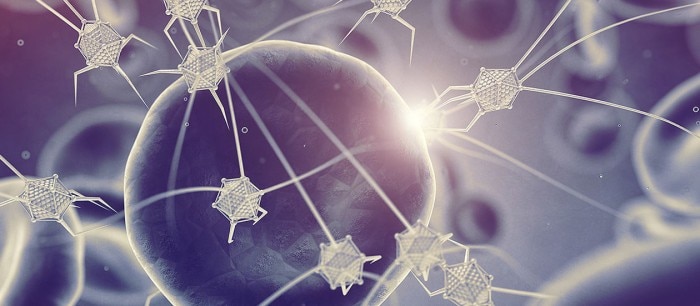メニュー
JP | JPY
-
-
-
- Challenges and Chances: A Review of the 1st Stem Cell Community Day
- Summertime, and the Livin’ Is Easy…
- Follow-on-Biologics – More than Simple Generics
- Bacteria Versus Body Cells: A 1:1 Tie
- Behind the Crime Scene: How Biological Traces Can Help to Convict Offenders
- Every 3 Seconds Someone in the World Is Affected by Alzheimer's
- HIV – It’s Still Not Under Control…
- How Many Will Be Convicted This Time?
- Malaria – the Battle is Not Lost
- Physicians on Standby: The Annual Flu Season Can Be Serious
- At the Forefront in Fighting Cancer
- Molecular Motors: Think Small and yet Smaller Again…
- Liquid Biopsy: Novel Methods May Ease Cancer Detection and Therapy
- They Are Invisible, Sneaky and Disgusting – But Today It’s Their Special Day!
- How Many Cells Are in Your Body? Probably More Than You Think!
- What You Need to Know about Antibiotic Resistance – Findings, Facts and Good Intentions
- Why Do Old Men Have Big Ears?
- The Condemned Live Longer: A Potential Paradigm Shift in Genetics
- From Research to Commerce
- Chronobiology – How the Cold Seasons Influence Our Biorhythms
- Taskforce Microbots: Targeted Treatment from Inside the Body
- Eyes on Cancer Therapy
-
-
-
-
-
- Challenges and Chances: A Review of the 1st Stem Cell Community Day
- Summertime, and the Livin’ Is Easy…
- Follow-on-Biologics – More than Simple Generics
- Bacteria Versus Body Cells: A 1:1 Tie
- Behind the Crime Scene: How Biological Traces Can Help to Convict Offenders
- Every 3 Seconds Someone in the World Is Affected by Alzheimer's
- HIV – It’s Still Not Under Control…
- How Many Will Be Convicted This Time?
- Malaria – the Battle is Not Lost
- Physicians on Standby: The Annual Flu Season Can Be Serious
- At the Forefront in Fighting Cancer
- Molecular Motors: Think Small and yet Smaller Again…
- Liquid Biopsy: Novel Methods May Ease Cancer Detection and Therapy
- They Are Invisible, Sneaky and Disgusting – But Today It’s Their Special Day!
- How Many Cells Are in Your Body? Probably More Than You Think!
- What You Need to Know about Antibiotic Resistance – Findings, Facts and Good Intentions
- Why Do Old Men Have Big Ears?
- The Condemned Live Longer: A Potential Paradigm Shift in Genetics
- From Research to Commerce
- Chronobiology – How the Cold Seasons Influence Our Biorhythms
- Taskforce Microbots: Targeted Treatment from Inside the Body
- Eyes on Cancer Therapy
-
-
JP | JPY

Taskforce Microbots: Targeted Treatment from Inside the Body
生命科学の探究
- 幹細胞
- 効率
- 次世代シークエンシング
- 増幅およびPCR
- エッセー
- 医療
Targeted drug delivery and treatment
In a few years, such microscopically small machines could be used inside the body to deliver medicines directly to target locations. Chemotherapeutics, for example, might be specifically guided to tumor cells, to bind them and then kill them effectively. Similarly, nanobots may perform diverse roles, such as transporting medicines directly into the retina to treat macular degeneration. Additionally, they could also be used for the collection of tissue samples.
Researchers must first, however, overcome three fundamental challenges. They must, firstly, miniaturize their robots as much as possible to enable them to be injected or swallowed. They then must find ways of controlling their movement, and finally, must develop a strategy for removing the robots once work has been completed.
Scientists experiment with shape, size and motion control
It’s already five years since researchers at Harvard University in Massachusetts created a nanobot made from folded DNA. This microscopic, hexagonal cage opens up to release pharmaceutical when it’s docked onto tumor cells. Since then, several nano-machines of varying design have been developed. For example, a group of Scientists from the German Max-Planck-Institute for Intelligent Systems, have developed miniature artificial clams which are just a few hundred micrometers in size and an even smaller propeller, with a diameter of only 100 nanometers. Researchers from the German Leibniz-Institute for Interactive Materials have also built small mobile micro-propellers, rotating helixes and tweezers using gels. Advanced 3D-printing is one of the key technologies for the development of nanobots and has been widely used to create such tiny structures. Their movement is usually controlled remotely from outside the body. Whilst some nanobots may react to light stimuli, others can move through using a magnetic field.
Dosage form depends upon size
Nanobots are typically designed to be injected into the body. However, for larger minirobots of sizes up to a few millimeters, this is impossible and these are therefore usually taken orally. Researchers at the Massachusetts Institute of Technology recently presented an origami-bot. The Japanese folding technique is used to shrink a minirobot down to pill size. Once the pill has been swallowed, it dissolves in the stomach and the robot then unfolds. It can treat injuries or remove foreign objects from the digestive tract - for example, when infants have accidentally swallowed batteries or coins.
Currently just prototypes
Although none of these innovations are now ready for human use, scientists are presently developing working prototypes. Researchers at the Zurich University ETH, for example, have injected 80.000 micro-bots into living mice. Using a magnetic field, they successfully led the little robots to a targeted location where medicine has been released.
It is inside and has done its job - now what?
Up until now, there has been no known way to remove the robots from the body. The use of biodegradable polymers is currently seen as a potential solution to this problem and it is possible that such materials could be fully digested by the body itself.
Leading scientists, however, are sure about one thing: nanobots have a bright future and may well go on to revolutionize medical treatment.
もっと読む
表示を減らす
